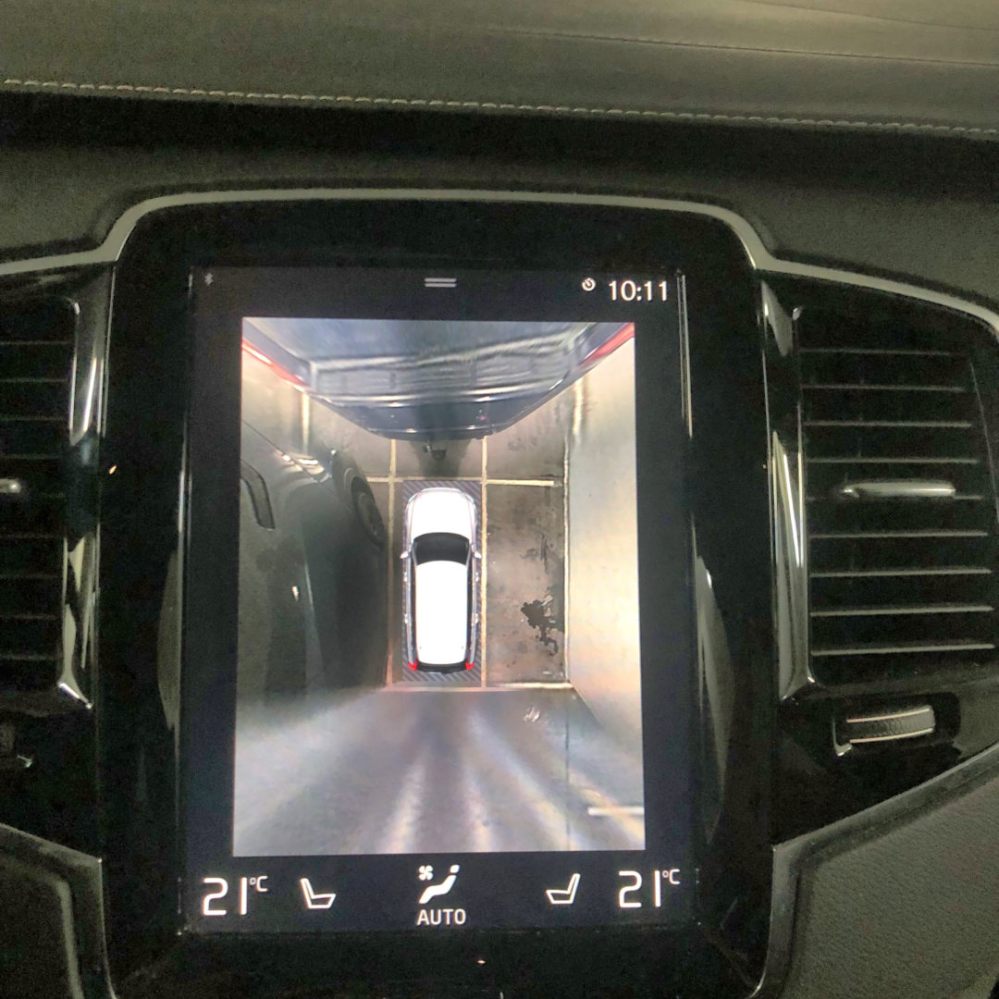Will Volvo XC90’s popularity decline when the new electric EX90 arrives? It is amazing how popular the XC90 is. After all, we are talking about a very expensive hybrid car.
Model history
Volvo is by no means finished with the XC90 series. Earlier this year, quite large improvements were made to the T8 hybrid drivetrain. The battery pack has been given an extra layer of cells that increases both battery capacity and range. The rear electric motor has got more power. With increased power from the electric motor, Volvo has chosen to remove the supercharger. Instead, the upgraded 2-litre turbo engine has received a minor power increase. The total boost effect in “Power” mode increases from 407 HP to 455 and the range on pure electricity is increased from 46 to 68 km.
“Our” car is an early 2022 model based on the previous upgrade from May/June 2019. Also, then, the battery pack received a long-awaited increase in capacity and a small facelift. From what I can see, all 2022 models now have hidden tailpipes. It also appears that the 2023 model will be produced without any exterior changes from the 2022 models.
When the first generation XC90 arrived in 2002, I noticed that many of those who found the car appealing, had never previously shown any interest in cars like this – many of them with family. The large, solid, safe and family-friendly Volvo still ticks several boxes for many. The latest Volvo XC90 with the T8 hybrid drivetrain is truly more appealing than ever.
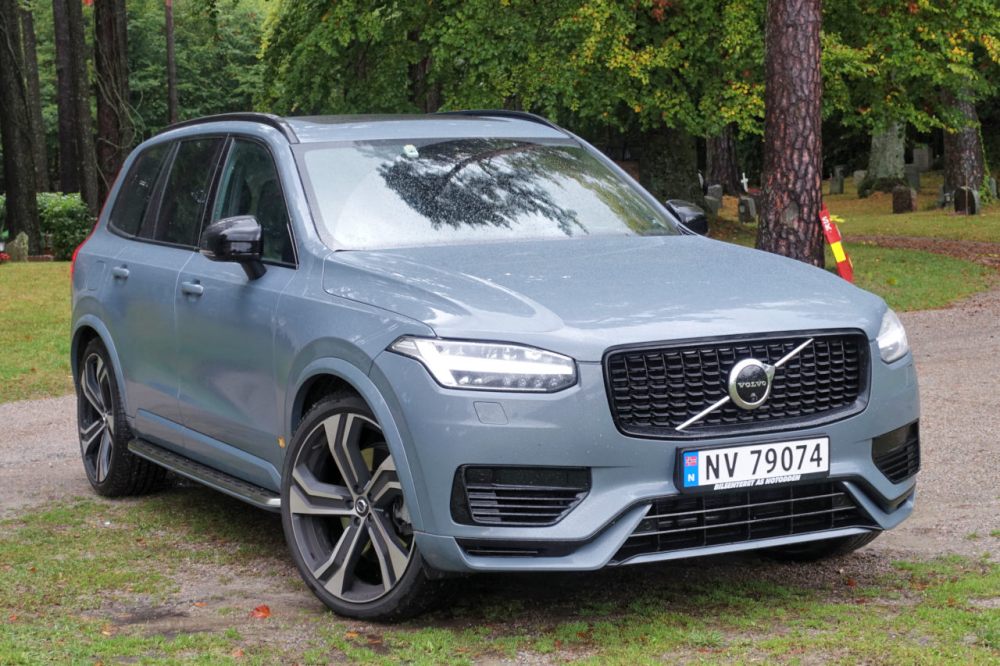
Gas guzzler?
“It’s a good car!” My son knows the XC90 quite well. “I always drive in Power mode, – otherwise it feels dead”, he said. The XC90 may not be the first choice for “keen drivers”. But if you put the car in Power mode, it reacts spontaneously to the throttle in the same way as a vigorous electric car. When I checked the car’s trip computer on “our” XC90, I discovered that the fuel consumption from previous driver(s) was a whopping 1.3 litres/10 km! If you drive actively, the XC90 can probably be experienced as a gas guzzler. In standard “hybrid” mode, the car is experienced as a completely normal hybrid car. The hybrid mode suited me well as I merged into the heavy rush hour traffic in central Oslo.
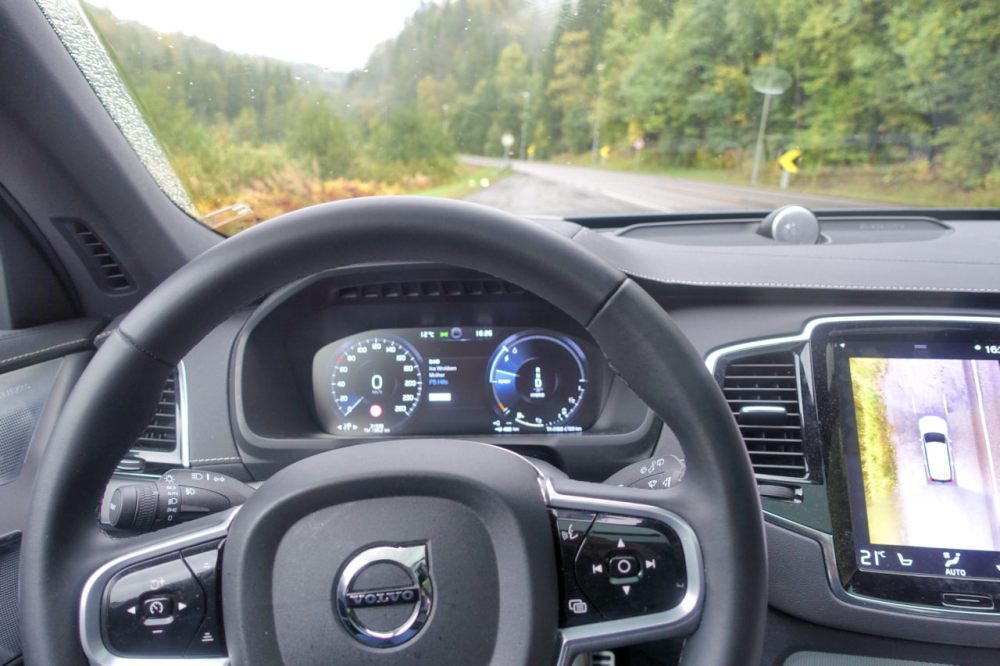
A big car
A large car in the city is fine as long as you have off-street parking at home and parking facilities at work. I noted that several of the parking slots at the Oslo City Shopping Centre would simply be too narrow for “my” XC90. You get good help from the camera, which shows the car’s location in a bird’s-eye view. Then you don’t have to open the door to see if you are within the markings. Out in city traffic, I also noticed that I had good visibility in all directions. Volvo’s blind spot warning system is still good to have, as it also warns of commuting cyclists. If you are going to park curbside in narrow city streets, I think you might wish for a smaller car.

On the road
I charged the batteries to a decent 75% before we left. The calculated range on electricity was a measly 25 km. We were on our way to Skien and drove in hybrid mode, where the car automatically distributes the power. The miles on the motorway down to Grelland went very well with a pleasant low noise level dominated by the sound of the 22 inch monster wheels. We continued towards Hvittingfoss and down the valley below. No stress. The car switched seamlessly petrol engine, electric motor and freewheeling without us noticing anything.
From Steinsholt, the road takes off towards Siljan, with climbs and sharp curves. I noticed that the car changed character. A nice hum from the engine and quicker gearshifts. The monster tires gave great grip around the curves. The car’s chassis is a bit stiff but still comfortable as it picks up the bumps nicely. It’s amazing that a two and a quarter ton car can move that easily!
We were on our way to Borgund Church to tend a family grave for the autumn cold. When my wife was a child, her family drove the same way to visit her grandparents. At that time, it was a simple gravel road, and things went at a snail’s pace when they were left behind heavy trucks up the steep hills.

Comfort
We talked about what we liked about the XC90. We focused on comfort. It’s not every day that we drive cars that cost more than one and a quarter million kroner. We benchmarked the Volvo with another great car, the BMW 530d M sport we had during a visit to Essex a few years ago. Then we were awarded the most expensive rental car at the airport! The Bimmer also had a fantastic undercarriage. My wife thought it had more comfortable seats – softer leather and softer padding that really embraced you. In terms of comfort, it was 1-0 to BMW. “But YOU probably like these seats better” , she countered. Quite correct! For me, the driver’s seat in Nubuck Leather and Alcantara is like an individual ergometrically adapted executive chair.
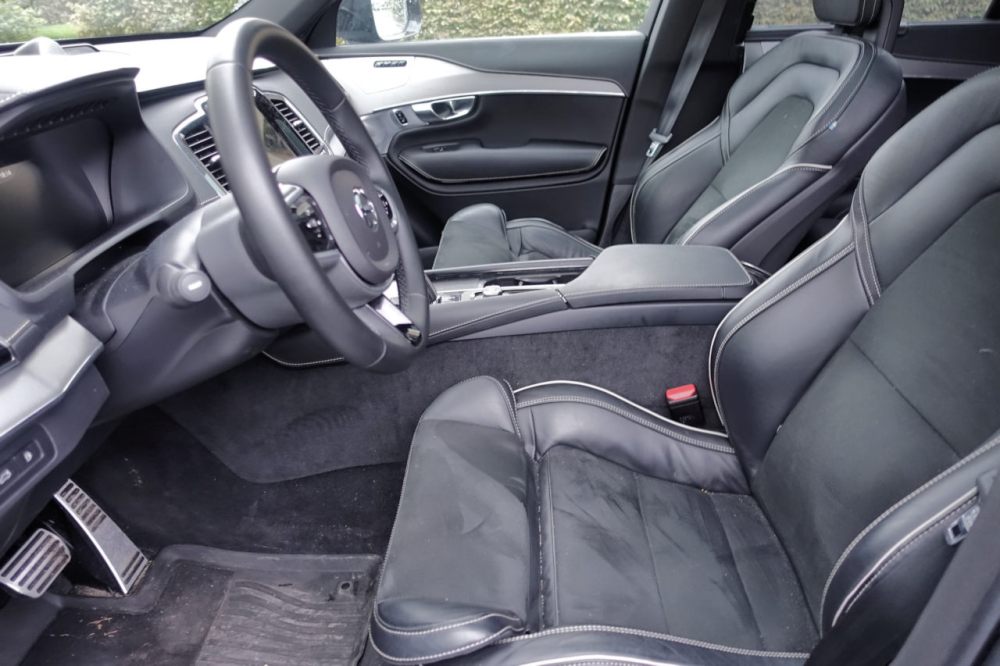
Old old roads
After lunch in Eidanger, we took the long way home via the old road to Larvik, the one that goes over the old Langangen Bridge. The new bridge was built in 1979. Before that, the E18 crossed underneath the center of Langangen with steep sections on both sides. On one side is the “corkscrew” – a section of road that is shaped like a loop to make the climb/descend less steep. The old road was actually built as early as 1858 – 1861. It got a stronger bridge during the war in order for the Germans to get their war machinery through. Still, a very primitive road that was in use right up until 1979. It must have been a nightmare to cross here during the winter!
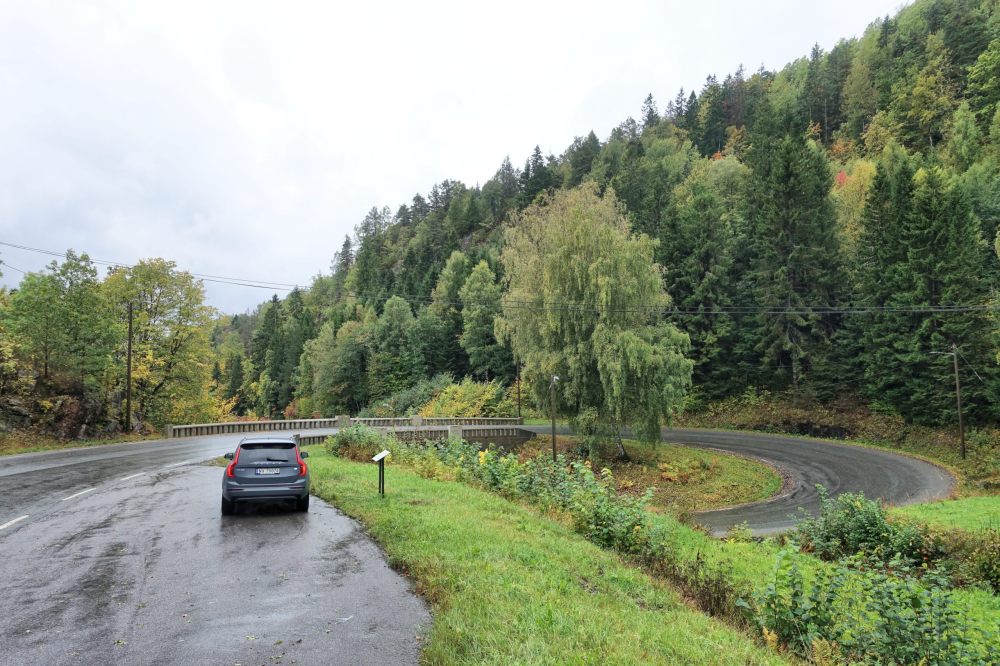
0.85 per 10 km
The trip to Borgestad of 130 km gave an average consumption of 0.75 litres/10 km. Together with the trip back, we ended up with 280 km and an average consumption of 0.85 litres/10 km. When we started, we had 25 km on the battery. Had we peaked up to 30 km before the journey home, we could have reduced the total average consumption to 0.75 litres/10 km. But that is only theoretical. Since the car only accepts 3.6 kW, it is not convenient to charge on the go. If you can charge at home, it pays to start long journeys with full batteries.
35 km range
“Our” car is an early 2022 model with a battery capacity of 11.6 kwh gross and 9.1 kwh net. Stated range is 46 km. After fully charging, we got an estimated range of 35 km. The next day I drove “to work” in “pure electric” mode. After 12 km of city driving, the estimated range was reduced accordingly. Then the stated range was in accordance with reality. 35 km is not much, but would have covered my daily commute. And by the way, the heavy car worked fine on pure electricity.
Cars delivered from January 2022 received a higher battery capacity, 18.7 kWh gross and 14.8 net. The stated range is 68 km, but real consumption is probably correspondingly lower.
Unwanted engine noise
I am not worried about the range on electricity being only 35 km. Even if I drive longer, I have still saved petrol for 35 km. What annoys me most about the drivetrain is that when I start up in hybrid mode, the petrol engine starts running after a short time – and it runs at a monotonously high idle speed – like a cheap generator – despite the fact that there is actually plenty of power on the battery. The same can also happen when I arrive. When maneuvering a 100 000 dollar hybrid car – inside a public garage or in a quiet residential area, I expect it to be intelligent enough to use the remaining electrical power without starting the petrol engine. It is actually one of the reasons why I would choose a hybrid car.
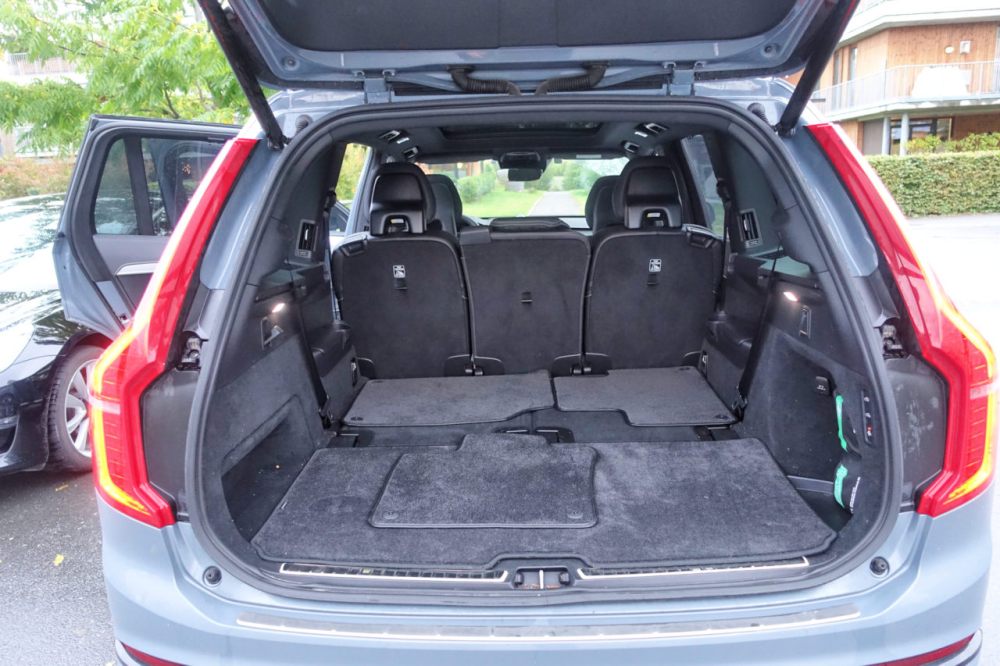
Roominess
With 5 seats in use, the boot holds 640 litres plus a small space underneath for charging cables. It is on a par with competitors like Audi and BMW. As a 7-seater, there is only room for 262 litres. The two rear seats are for children. The interior space is easily converted into a flat floor and it is easy to create flexible solutions, for example combining the transport of long or shapeless objects together with passengers.
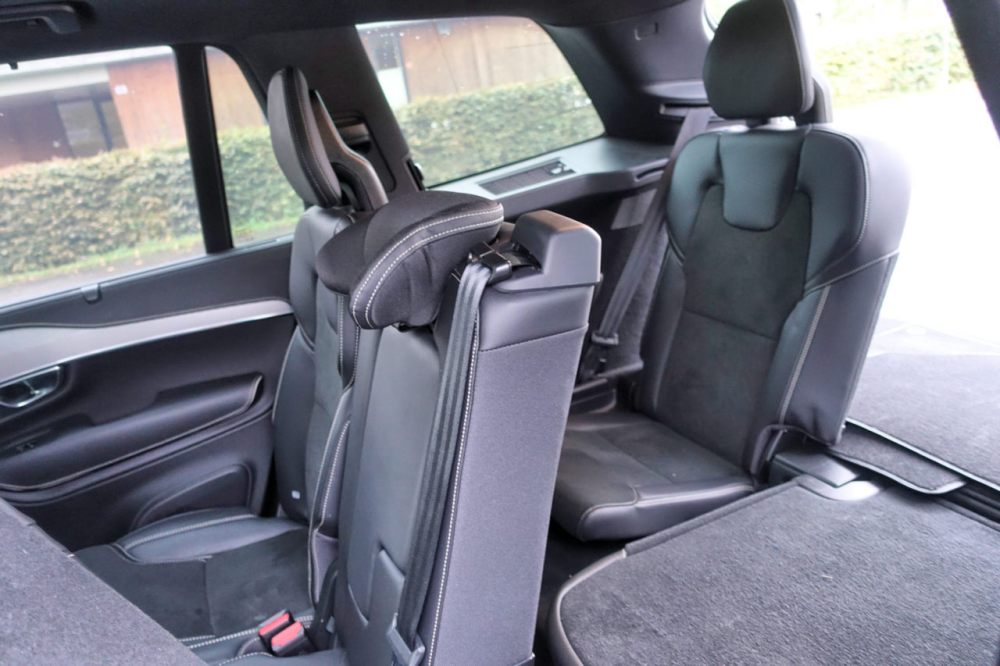
Safety
The Volvo XC90 was tested by Euro NCAP in 2015 with a D5 diesel engine without a battery pack. It then scored 5/5 stars, got 97% for adults and 87% for children. In a side impact test with a pillar, it was discovered that the rear part of the crash curtain did not unfold as it should. That could be unfortunate for the passengers in the 3rd row of seats. According to Euro NCAP, Volvo has stated that they have fixed the fault and informed owners of 7-seaters to have their cars fixed as well.
Conclusion
The Volvo XC90 is a fantastic vehicle, but I don’t think it is wise to buy a brand new expensive plug-in hybrid now. I think hybrid cars may lose market shares to pure electric cars – not to forget Volvo’s new large electric SUV, EX90. I would definitely wait and see how the EX90 catches the market. Anyway, Volvo XC90s from May/June 2019 are still great cars even when they are used.
Facts about the Volvo XC90 Recharge
Dimensions and weight
Outer dimensions – L, W, H: 495 x 193 x 177 cm
Wheelbase: 289 cm
Net weight: 2252 kg (without driver)
Payload: 653 kg
Number of seats: 7
Max trailer weight w/brakes: 2400 kg
– without brakes: 750 kg
Roof load: 100 kg
Drivetrain “our” car (early 2022 model)
Type: T8, B4204T34
Three engines. A 2.0-litre inline-four petrol engine with turbo and supercharger drives the front wheels. An electric motor in the rear drives the rear wheels. A third motor – also an electric motor – sits between the petrol engine and the gearbox and ensures that the power from the petrol engine is delivered evenly – i.e. without gaps under throttle. In addition, it provides a boost effect-
Power: 303 HP from the main engine, 87 HP from the rear electric motor and 71 HP from the auxiliary motor, which together provide 390 HP and a boost effect of 407 HP.
Gearbox: 8-speed Geartronic automatic (Aisin AW TG-81SD)
Electronically controlled four-wheel drive.
Drivetrain new cars (from late 2022 model)
Type: T8, B4204T56
Same concept as before with three engines. Still a 2.0-litre inline-four turbo petrol engine, now without a supercharger, but with a minor increase in power. The rear electric motor has received a solid power increase.
Power: 310 HP from the main engine, 145 HP from the rear electric motor and 71 HP from the auxiliary engine. Together, they can provide a boost effect of 455 HP.
Gearbox: 8-speed Geartronic automatic (Aisin AW TG-81SD)
Electronically controlled four-wheel drive.
Battery pack “our” car (early 2022 model)
Type: Li-ion
Location: Centrally located longitudinally in tunnel.
Capacity (total): 11 Kwh
Capacity (usable): 9.1 Kwh
Range WLTP: 50 km
Measured range: 35 km
Charging time via Type2 cable: approx. 3 hours
Battery pack new car (from late 2022 model)
Type: Li-ion
Location: Centrally located along the tunnel.
Capacity (total): 18.8 Kwh
Capacity (usable): 14.9 Kwh
Range WLTP: 73 – 64 km
Charging time via Type2 cable: approx. 5 hours
Fuel consumption
Measured long-distance consumption: 0.85 litres/10 km
Luggage compartment
As a seven-seater: 262 liters
As a five-seater: 640 liters
+ Small space under the cover: 31 liters
Tires
Size: 275/35R22 104Y
Type: Summer tires
Brand: Pirelli P Zero
Prices 2023 model
Plus: NOK 1,098,102
Ultimate: NOK 1,139,900
Towbar: NOK 11,300
About the car
Production location: Torslanda, Sweden
Color: Thunder Gray
Equipment level: R-design/Dark
Leased by Hyre
Owner: Europcar Norway
Model: 2022
Mileage: 31780 km
Km driven: 306
